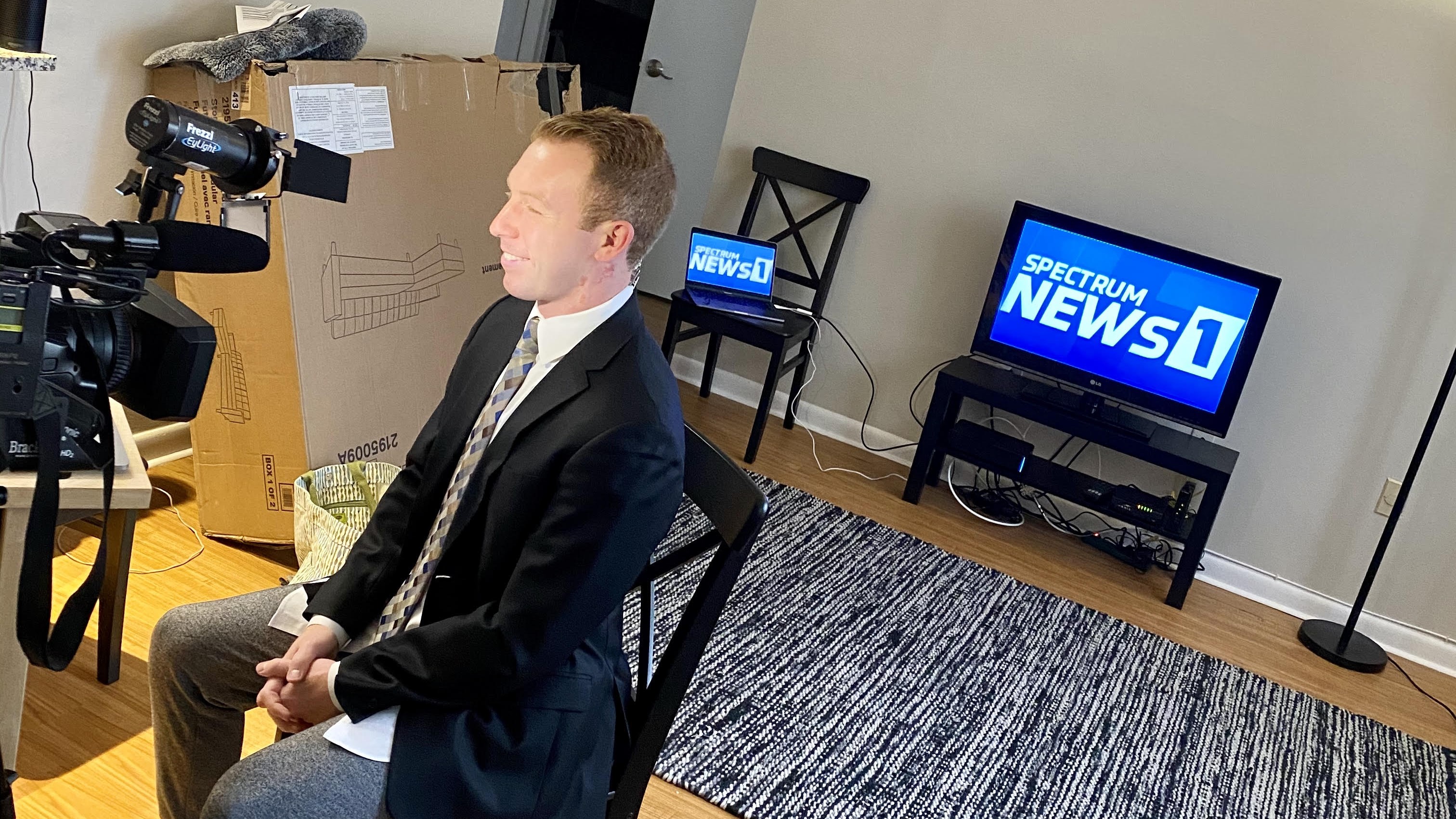Giving ‘@Home’ Production New Meaning
Amid separation, producers are getting creative

The current global situation has put new stress on communications and media systems, and at the same time provided new opportunities for creativity. Current estimates are the majority of countries around the world have been directly impacted by the coronavirus pandemic. It has literally touched the entire planet and global population. One of the best demonstrations of community is the current use of media to inform, entertain and share in ways not seen before.
In the professional media industry, the impact has been significant. Sports and entertainment production have been suspended, news has expanded under new rules and there is a new genre of “live.” Over the past decade or so, the number of live productions and events were mostly sports, some news, weather and the occasional entertainment show.
As the need to separate continues to grow even for news and weather, producers are getting creative and looking at technology to support seamless and uninterrupted live reporting. There are a number of creative efforts being made to keep live and “day of pre-record” i.e., late night shows that record earlier. The use of collaborative tools to bring together performers for virtual interviews, concerts and performances is growing. As more people isolate they are getting more inventive in staying “on the air.”
One of the unseen benefits of computer-based media technology is the ability to work remotely, manage remotely, contribute remotely and broadcast in automated systems that require fewer operators on premise. File-based content can be created and produced in a full collaborative environment from geographically separate locations.
While this seems like a perfect use of cloud products and services, there are still some challenges to overcome. However, using a hybrid of cloud and not-cloud has helped media companies maintain their on-air presence. I use the term “not-cloud” because on-premise has taken on new meanings. File-based content and advertising can be contributed, registered and programmed for air by remote management systems. Once the automation gets instruction from the traffic system, it can operate unattended. When we look at production, editing or graphics from a remote location is not new; on higher end graphics it’s more about having the same tools outside the broadcast center. Studio production is a little more challenging and most studio talent do not have home studios.
FROM HOME
In the midst of adding more storage and a media management solution, one of my clients instantly needed to establish remote access for the entire production team. There was no time for product review or implementing new technology—this was an exercise in implementing remote connectivity that would provide remote operations of on-premise production systems quickly to maintain on-air operations.
“@Home” now includes production, contribution and distribution with a large percentage of technical and business operations being managed from home. I am guessing that most broadcast networks were not planning or configuring their automation or cloud services for a “lights out,” off-premise operation. @Home was previously defined as having a full production team at the broadcast center and lots of connectivity to connect to a remote. This @Home experiment is having the entire production and technical operations teams all remote, possibly connected to run systems or possibly to manage systems virtually.
The commercial inventory needs to be registered before the traffic system can tell the automation what to do. Also traffic needs to be programmed. All production is remote—do the graphics operators have tools at home? Is the studio accessible remotely? How much can be remotely programmed?
NBC was gearing up for extensive @Home coverage of the Olympics. At the same time, they would still have had a considerable technical footprint in Japan, this is more of a “point-to-point” @Home example. Now as on-air news reporters report from their homes, production values change, interaction between reporters is more challenging and, interestingly, more spontaneous. Entertainers are discovering clever ways to host their programs with little if any studio support.
BUSINESS CONTINUITY
In my recent article on using mobile devices for professional production, I never thought of it as predictive as it has become. In some instances, mini studios were set up for some people, in other instances mobile devices are being used as camera and microphone and streamed over open internet to the broadcast center where it gets brought into a studio production system or incorporated into a sparsely staffed production studio.
Business continuity and disaster recovery have taken on new meaning as well. Major networks always had a backup solution if one broadcast center went offline, now we have a situation where all the broadcast centers are on skeleton crews and on-air talent remoting in without professional remote packages.
PLUS: Dejero Offers Complimentary LivePlus Licenses for At-Home Reporting
A colleague of mine who runs a number of events for the sports technology industry predicts considerable changes in how conference events will be supported, as well as how sporting events will be supported. There will be new business models and new workflows.
It will be interesting to see what evolves from this global adventure in new workflows, new remote considerations and how production and broadcast operations change. Will there be new technology to support this level of remote operations? Will this be a driver towards more cloud solutions? Will the home studio become more popular? Some of the video conferencing technologies have background key features as do some mobile apps.
Gary Olson is a broadcast technology designer and project executive specializing in the transition from traditional media technology and workflows to computer and network centric IP and File technologies and workflows. He can be reached at Gary@ghogroup.com.
The second edition of his book “Planning and Designing the IP Broadcast Facility” is now available.
Get the TV Tech Newsletter
The professional video industry's #1 source for news, trends and product and tech information. Sign up below.

